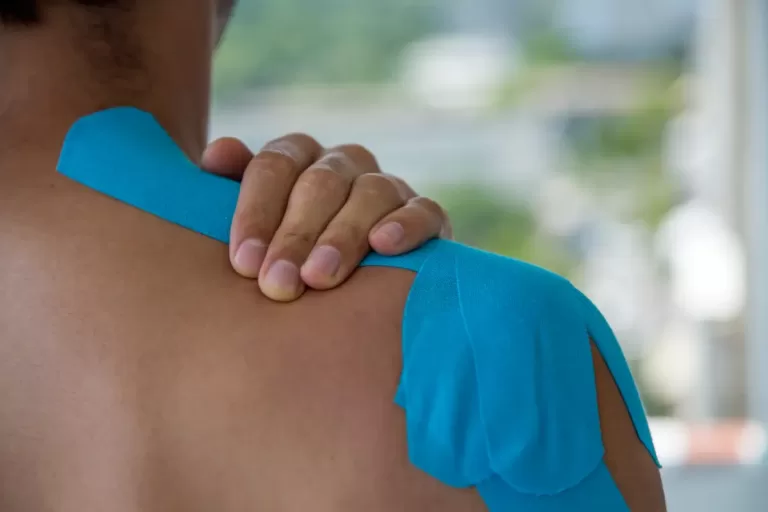Living with a frozen shoulder can be incredibly challenging. Everyday activities like reaching for something on a shelf, getting dressed, or even simply moving your arm can become painful tasks. Known medically as adhesive capsulitis, frozen shoulder causes stiffness and discomfort, significantly impacting quality of life. While traditional treatments exist, massage therapy has emerged as a popular, non-invasive option for those seeking relief. But does it truly work? Here, we’ll dive into the benefits of massage therapy for frozen shoulders, the best techniques, and what to expect.
What is a Frozen Shoulder? Understanding the Condition
Frozen shoulder is a condition where the shoulder joint becomes stiff and painful and loses its normal range of motion. It generally develops over time and goes through three distinct stages:
- Freezing Stage: Pain begins and gradually worsens. Movements become more limited.
- Frozen Stage: Stiffness sets in, and movement becomes severely restricted.
- Thawing Stage: The pain may start to improve, and the range of motion slowly returns.
Frozen shoulders can last months or even years, with each stage presenting unique challenges. It’s essential to understand the condition to find effective treatment options like massage therapy that address each stage’s specific needs.
What Causes Frozen Shoulder? Common Risk Factors
A clear injury or trauma doesn’t always cause a frozen shoulder. Here are some common contributing factors:
- Injury or Overuse: Repetitive movements or injuries can strain the shoulder, leading to inflammation.
- Medical Conditions: Diabetes, heart disease, and thyroid disorders can increase the risk.
- Immobility After Surgery or Injury: Long periods of inactivity, especially after an injury, can contribute to a frozen shoulder.
Knowing these risk factors can help prevent a frozen shoulder, especially if massage therapy is incorporated early to maintain shoulder mobility and reduce stiffness.
Can Massage Therapy Really Help Frozen Shoulder? Let’s Explore the Benefits
Massage therapy is often used as a complementary treatment for frozen shoulder. Here’s how it can help:
- Improves Blood Flow: Massage promotes circulation, which brings oxygen and nutrients to the affected area, speeding up the body’s healing process.
- Reduces Stiffness: Massage helps loosen tight muscles and connective tissues around the shoulder joint, which may improve range of motion.
- Pain Relief: Massage can help reduce pain by relaxing tense muscles and promoting endorphin release.
- Promotes Relaxation: By decreasing stress levels, massage therapy can make coping with pain and limited movement easier.
These benefits make massage therapy a valuable part of a frozen shoulder treatment plan, especially when combined with other therapies.
Types of Massage Therapy Techniques for Frozen Shoulder Relief
Not all massage techniques are created equal. Here are some targeted approaches that may provide the best relief:
1.Deep Tissue Massage
Deep tissue massage targets deeper layers of muscle and connective tissue, helping to release chronic tension. Deep tissue massage can be particularly effective for breaking up scar tissue that may have formed, allowing for greater mobility.
2.Myofascial Release
Myofascial release targets the connective tissues, or fascia, that surround and support the muscles. This technique involves applying sustained pressure to areas of tightness, which can help loosen the shoulder and improve movement over time.
3.Trigger Point Therapy
Trigger point therapy focuses on areas of muscle knots or spasms called trigger points. By applying pressure to these points, the therapist can help release tension, which often leads to reduced pain and increased range of motion.
4.Swedish Massage
While not as intense as deep tissue techniques, Swedish massage can relax the muscles, ease tension, and reduce pain. This approach is especially helpful during the early stages when pain may be more intense.
What to Expect During a Massage Therapy Session for Frozen Shoulder
If you’re considering massage therapy for a frozen shoulder, knowing what to expect can ease any uncertainty. Here’s a typical session outline:
- Initial Consultation: Your therapist will discuss your pain level, limitations, and any medical history that could influence treatment.
- Customized Treatment Plan: Based on your needs, the therapist will recommend a combination of massage techniques.
- Focus on Pain Relief and Mobility: The therapist will work on the shoulder area and surrounding muscles, focusing on relieving pain and improving movement. They might start with gentle techniques and gradually apply deeper pressure as you progress.
- Follow-Up and Home Care: After the session, you may receive tips for stretches and exercises to maintain mobility at home.
Massage therapy sessions for frozen shoulders often require multiple visits to see full results, and consistency can make a big difference in relief and recovery.
Combining Massage with Other Treatments for Best Results
While massage therapy can be effective, it often works best as part of a comprehensive treatment plan. Here are a few complementary therapies:
- Physical Therapy: Physical therapists use specific exercises to restore shoulder movement. Combining these exercises with massage therapy can lead to better results.
- Heat Therapy: Applying heat before a massage session can make the muscles more pliable and receptive to treatment.
- Stretching and Strengthening Exercises: Gentle exercises to stretch and strengthen the shoulder muscles help maintain the progress made during massage therapy sessions.
These combined approaches can create a more holistic treatment for frozen shoulder, speeding up recovery and helping maintain long-term shoulder health.
How Long Does it Take to See Results?
Recovery from a frozen shoulder varies widely based on the individual and the severity of the condition. Many patients report noticeable improvements in pain and mobility within a few weeks of consistent massage therapy. However, it may take several months to recover fully. Setting realistic expectations and following through with regular therapy sessions is crucial.
Self-Care Tips to Manage Frozen Shoulder at Home
In addition to massage therapy, certain self-care practices can help you manage a frozen shoulder at home:
- Gentle Stretching: Try simple stretches recommended by your therapist to keep the shoulder from tightening up.
- Ice and Heat Packs: Apply ice packs to reduce inflammation or heat packs to relax the muscles, depending on your pain level.
- Maintain Good Posture: Proper posture can alleviate unnecessary strain on the shoulder joint.
- Stay Active: Light activity like walking can improve circulation and help reduce stiffness.
Incorporating these habits can enhance the benefits of massage therapy and help you regain a full range of motion more quickly.
Sum Up
Massage therapy can be a valuable tool in managing a frozen shoulder, offering pain relief, improved mobility, and greater relaxation. While it’s not a cure, massage therapy can significantly improve quality of life when combined with other treatments. If you’re ready to take the next step toward recovery, consult a licensed massage therapist experienced in treating frozen shoulders. With the right approach, relief and increased movement can be within reach.
If you need massage therapy in Scarborough, we at Physio Cottage are here to help. Our experienced therapists are dedicated to providing personalized care to help you find relief and improve mobility. Contact us today to book your session and start your journey to recovery.








